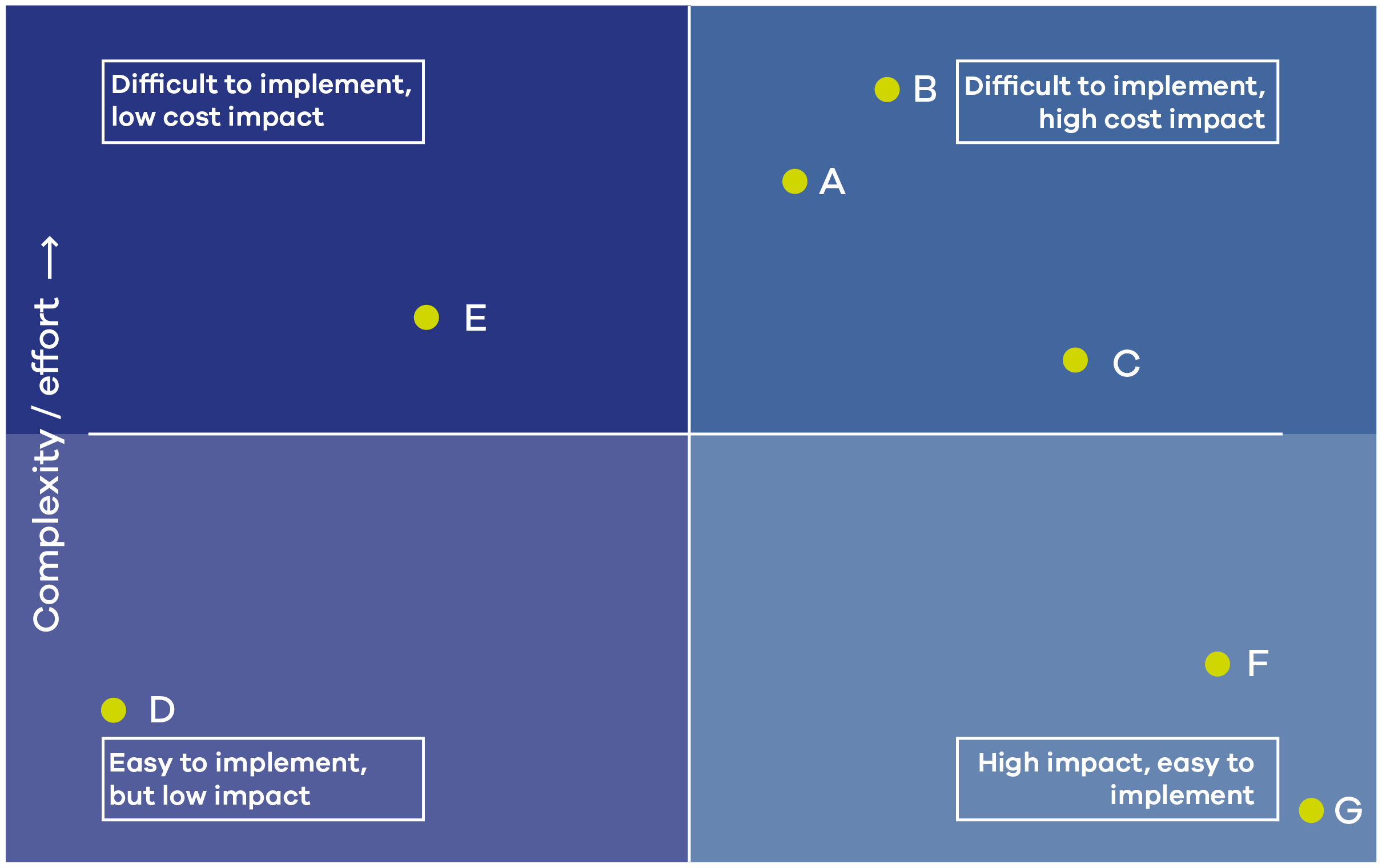Part 2- Cloud cost saving recommendations: Where to start
In part 1 of this series, we covered the challenges organisations can face when presented with multiple cost optimisation recommendations. Below we will provide you with some general tips on how to approach deciding what recommendations to implement and in what order.
As you’re reviewing recommendations, always consider what automation, guardrails, processes and education could help to reduce waste and make future evaluations easier. Each recommendation will require varying amounts of effort to ensure high value impact across the organisation (cost optimisation/reduction).
Effort and cost impact
Mapping the effort against cost impact of each potential opportunity will allow you to target which recommendations you should implement first. Targeting the high impact low effort recommendations give you the largest savings quickly.

Terminating resources from an idle Proof of Concept launched 2 years ago but not cleaned up (example point D) is usually quicker and easier to action than resizing compute instances used by your most important production application (example point B). If the cost to implement the changes needed outweighs the savings, you may choose to park the recommendation for now (example point E).
The act of purchasing commitment-based discounts is relatively easy and can have big cost savings (example point G). However, purchasing all the recommendations is seldom something that should be done in practice. There is a lot of analysis and conversations to be had to not end up locking yourself into technologies or wasting money in the long run.
Commitment-based discounts
Knowing the break-even point for commitment-based is important to understand when you are evaluating recommendations. The saving rate and commitment duration dictate the break-even point. The break-even point typically occurs around months 6 to 8 on a 1-year commitment and months 19 to 22 on 3-year commitments.
After you pass the break-even point, you start to benefit from the savings of the commitment-based discounts compared to on-demand costs. If you have a recommendation to purchase a commitment-based discount for a resource that you plan to change or delete after the break-even point but before the end of the term, you should consider purchasing the commitment-based discount. You’ll be no worse off if you do end up changing the resources at the break-even duration and if your plans are delayed, you start to benefit from the savings.
Reviewing commitment-based discounts regularly and purchasing in small quantities allows you to monitor utilisation and adapt better to technology and strategy changes. Purchasing large set of commitment-based discount in one go presents you with a cliff-edge as they all expire at the same time which could force you to make big changes in a short time-frame.
Monitor and iterate
If you acted on any recommendations, monitor the impact of those. Did they have the desired impact? Can you now look at anything that you parked on the last review? Has your usage changed since the last review so there are new recommendations to evaluate?
Even if you didn’t act on any recommendations, your cloud usage and strategy may also have evolved since the last snapshot of recommendations was taken so refresh the views to see if there are other areas to look at and cycle through the process again.
The order in which you implement cloud cost recommendations is unique to each organisation and the priorities at the time. One thing that is common is purchasing 100% of the committed-use discount recommendations is almost never the best option as implementing other recommendations will change the usage profiles possibly invalidating the committed-use discounts.
Adding business context to the recommendations and aiming for the greatest value will help plan which recommendations to implement (fully or partially) and which to park for now and review at a later date.
